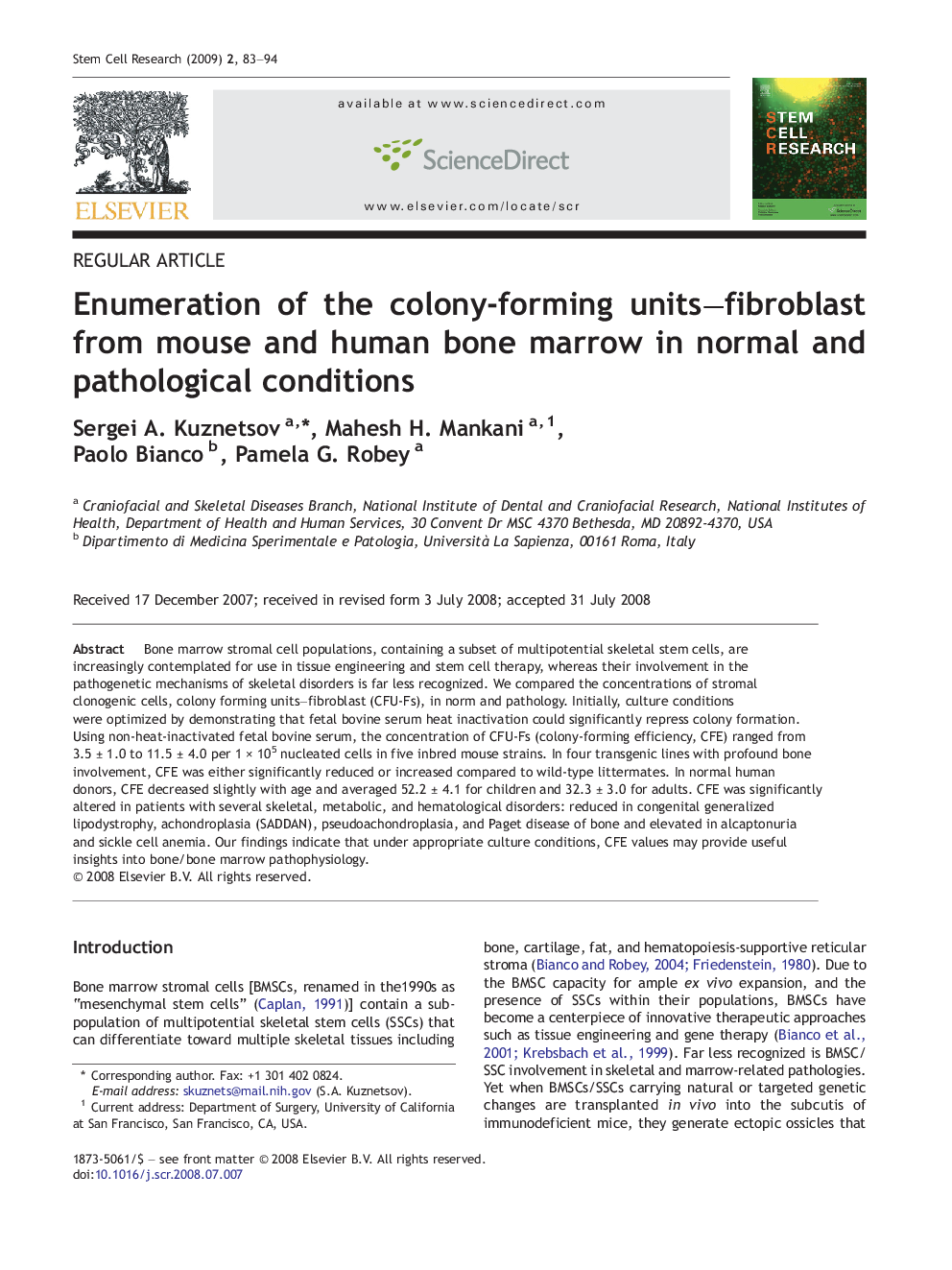| Article ID | Journal | Published Year | Pages | File Type |
|---|---|---|---|---|
| 2094387 | Stem Cell Research | 2009 | 12 Pages |
Bone marrow stromal cell populations, containing a subset of multipotential skeletal stem cells, are increasingly contemplated for use in tissue engineering and stem cell therapy, whereas their involvement in the pathogenetic mechanisms of skeletal disorders is far less recognized. We compared the concentrations of stromal clonogenic cells, colony forming units–fibroblast (CFU-Fs), in norm and pathology. Initially, culture conditions were optimized by demonstrating that fetal bovine serum heat inactivation could significantly repress colony formation. Using non-heat-inactivated fetal bovine serum, the concentration of CFU-Fs (colony-forming efficiency, CFE) ranged from 3.5 ± 1.0 to 11.5 ± 4.0 per 1 × 105 nucleated cells in five inbred mouse strains. In four transgenic lines with profound bone involvement, CFE was either significantly reduced or increased compared to wild-type littermates. In normal human donors, CFE decreased slightly with age and averaged 52.2 ± 4.1 for children and 32.3 ± 3.0 for adults. CFE was significantly altered in patients with several skeletal, metabolic, and hematological disorders: reduced in congenital generalized lipodystrophy, achondroplasia (SADDAN), pseudoachondroplasia, and Paget disease of bone and elevated in alcaptonuria and sickle cell anemia. Our findings indicate that under appropriate culture conditions, CFE values may provide useful insights into bone/bone marrow pathophysiology.
